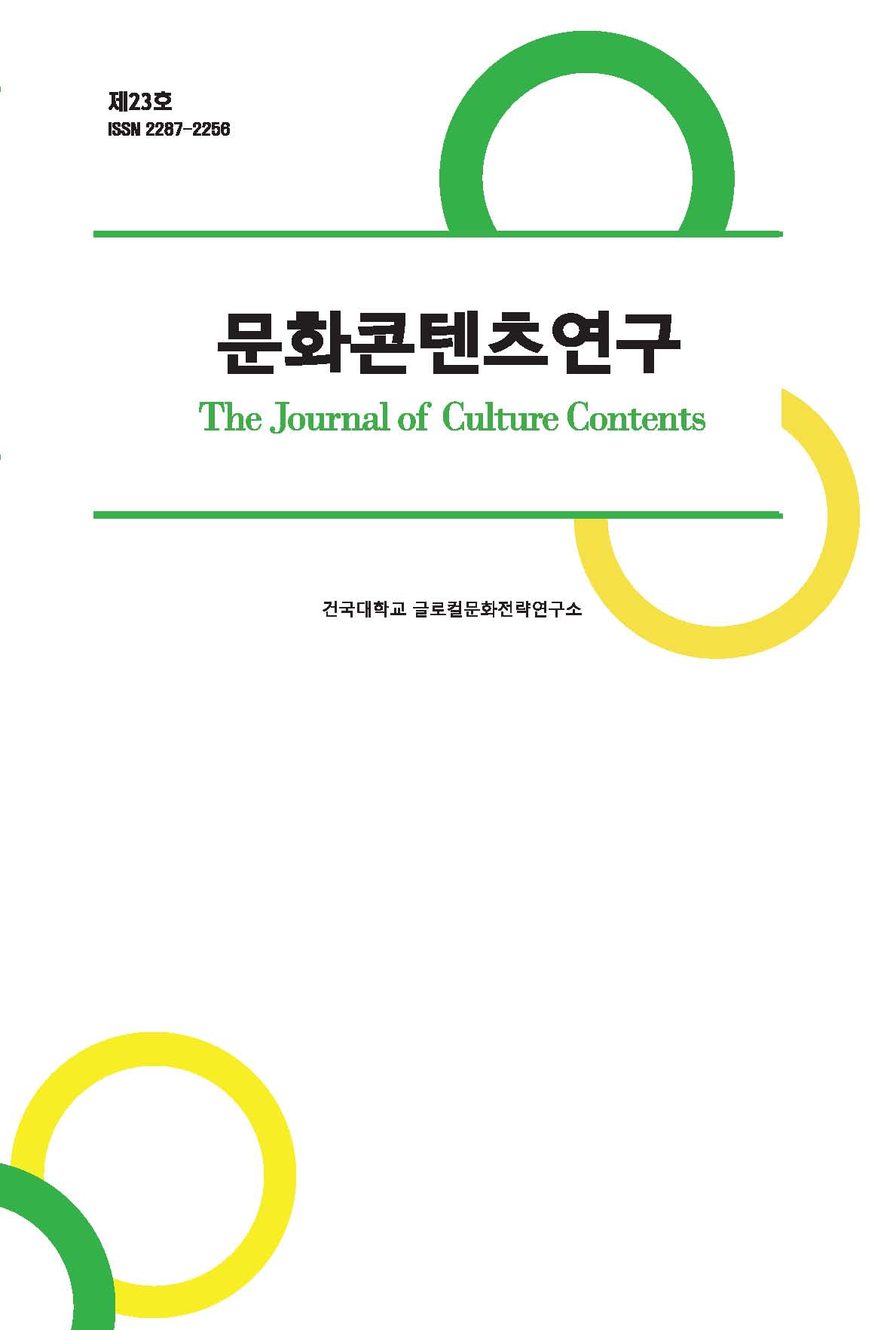Abstract
References
Information
The question of how to remember the Korean War is one of the important indicators that define the identity of Korean society and its members to this day. There are many types and aspects of memory related to the Korean War, but this study tried to explore its meaning through the movie (2010). was the first film to deal with the Nogeun-ri incident, a civilian massacre, through the popular media of the movie, and it is clear that it is an example of popular memory about the Korean War. To this end, this study was discussed based on two research methodological positions: film text and its audience. This means that the discussion of the representation itself, such as the narrative, expression, and symbol of , as well as the issue of how the audience accepts or means it. As a result of the study, it was confirmed that rejects the genre conventions of existing Korean war movies and minimizes technique or expression. encouraged the regeneration or evocation of memories beyond describing only the death or sacrifice that occurred in the Nogeun-ri incident. Second, through review analysis, it was also confirmed that the popular memories of the Korean War appeared in various ways through . The characteristics of the type are summarized as summons of ideological confrontation, restoration and penance of humanity, evaluation of memory itself, evaluation of the goods of film, and intertextual memory. In conclusion, is not just a movie that presents visual experiences, but a cultural practice that reveals the politics of memory, and accordingly, it has been confirmed that popular memory is also composed in competition among various memories.
한국 전쟁을 어떻게 기억하는가의 문제는 한국 사회 그리고 구성원들의 정체성을 규정하는 중요한 지표 중 하나이다. 한국 전쟁과 관련된 기억의 유형과 양상은 매우 다양하지만, 본 연구는 노근리 사건을 최초로 다룬 영화 <작은 연못>을 통해 그 의미를 탐구하고자 했다. 이를 위해 본 연구는 영화 텍스트와 그 수용이라는 두 가지 연구방법론적 입장에 근거하여 논의를 진행하였다. 이는 <작은 연못>의 서사, 표현, 상징 등과 같은 재현 그 자체에 대한 논의와 더불어 그것을 대중들이 어떻게 수용 혹은 의미화하는지에 대한 문제를 동시에 다루었다는 것을 뜻한다. 연구 결과, <작은 연못>은 기존 한국 전쟁 영화의 장르적 관습을 벗어나 기교나 표현을 최소화하고 있음이 확인되었다. 또한 <작은 연못>은 노근리 사건에서 발생했었던 죽음이나 희생만을 재현하는 것을 넘어서 그 기억을 재생하거나 환기할 것을 유도하였다. 두 번째로 리뷰 분석을 통해, <작은 연못>을 매개로 하여 한국 전쟁의 대중 기억이 다양하게 나타나고 있음도 확인되었다. 그 유형의 특징은 이념적 대립의 소환, 인간성의 회복과 참회, 기억 그 자체에 대한 평가, 영화라는 재화에 대한 평가, 상호텍스트적 기억 등으로 요약된다. 종합하면, <작은 연못>은 단순히 시각적 경험을 제시한 영화가 아닌 기억의 정치성을 드러내는 문화적 실천이며, 그에 따라 대중 기억 또한 다양한 기억들 간의 경합 속에서 구성된다는 점이 확인되었다.
- 모리스, 마크, 2018, 「냉전 패닉과 한국전쟁 영화 : 죽창에서 신체강탈까지」, 김소영 편, 『한국영화, 세계와 마주치다』, 현실문화연구, 2018.
- 문선영, 「한국전쟁과 애도의 수사학: <작은 연못>을 대상으로」, 『아시아영화연구』 제3권(제2호), 2010.
- 박미숙, 「고래(Whale)상징에 대한 연구」, 『모래놀이상담연구』, 제16궈, 2020.
- 조영한, 「인터넷과 민속지학적 수용자 연구: 인터넷 에스노그라피의 가능성과 과제」, 『미디어, 젠더 & 문화』, 제21호, 2012.
- 태지호, 『기억문화연구』, 커뮤니케이션북스, 2014.
- 태지호, 「역사문화콘텐츠 연구 방법론으로서 ‘문화 연구’를 전유하기」, 『인문콘텐츠』, 제64호, 2022. 10.18658/humancon.2022.03.23
- 태지호·황인성, 「영화에서 드러나는 한국전쟁에 대한 집단기억과 대중기억 만들기」. 『한국언론학보』, 제58권(제6호), 2014.
- 황영미, 「영화에 나타난 한국전쟁기 미군과 민간인의 관계: <작은 연못>, <웰컴 투 동막골>. <아름다운 시절>을 중심으로」, 『현대영화연구』, 제18권, 2014.
- Louis Giannetti, Understanding Movies, 박만준·진기행 역, 『영화의 이해』, K-books, 2010.
- Robert Bevan, The Destruction of Memory Architecture at War, 나헌영 역, 『집단기억의 파괴』, 알마, 2012.
- Assmann, Jan, ‘Collective Memory and Cultural Identity’, New German Critique, 65, 1995. 10.2307/488538
- Connerton, Paul, How societies remember, Cambridge: Cambridge University Press, 1989. 10.1017/CBO9780511628061 2529044
- Foucault, Michel, ‘Film and Popular Memory’, Radical Philosophy, 5(11), 1975.
- Erll, A., Memory in Culture, London: Palgrave Macmillan, 2011. 10.1057/9780230321670
- Genette, Gerard, Seuil. Lewin, J. E.(Trans.), Paratexts: Thresholds of interpretation, Cambridge: Cambridge University Press, 1997, (Original work published 1987).
- Rosenstone, R. A., Visions of the past: the challenge of film to our idea of history, Cambridge, Mass: Harvard University Press, 1995.
- Sturken, M., Tangled memories: The Vietnam War, the AIDS epidemic, and the politics of remembering, Berkeley: University of California Press, 1997. 10.1525/9780520918122
- 노근리사건 희생자 심사 및 명예회복에 관한 특별법.
- 노근리평화공원 홈페이지, nogunri.yd21.go.kr.
- 국민일보, https://news.kmib.co.kr/article/view.asp?arcid=0003599803&code=13200000.
- 영화진흥위원회 통합전산망, http://www.kobis.or.kr.
- Publisher :Research Institute of Creative Contents
- Publisher(Ko) :글로컬문화전략연구소
- Journal Title :The Journal of Culture Contents
- Journal Title(Ko) :문화콘텐츠연구
- Volume : 29
- Pages :45-76
- DOI :https://doi.org/10.34227/tjocc.2023..29.45



 The Journal of Culture Contents
The Journal of Culture Contents





